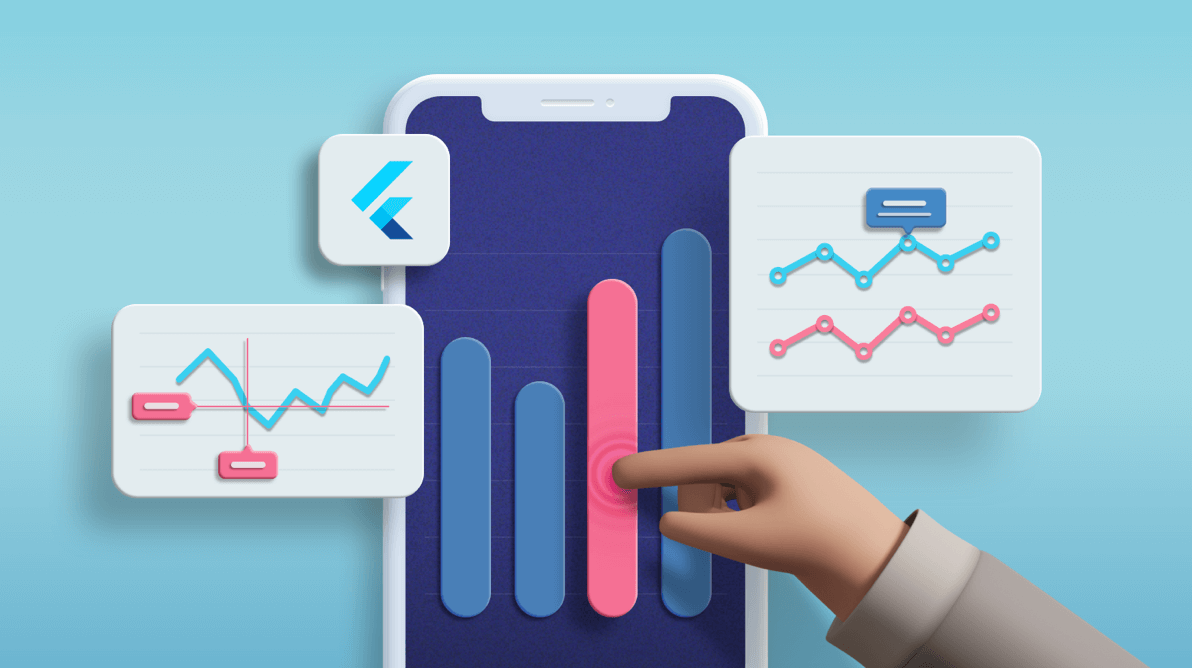

Looking at raw data and trying draw conclusions from it is very tedious. Visual representations such as charts and graphs overcome this problem. These visual representations, when powered by interactive features, are a piece of cake to understand. In this blog, I am going to walk you through the rich and highly interactive features of Syncfusion Flutter Charts, namely:
These features help users understand data in various ways. Users can experiment with their data’s presentation to answer questions about it with the best visuals. Let’s check out these rich interactive capabilities.
The tooltip is one of the Syncfusion Flutter Charts control’s most valuable features. On interacting with data points in a series, the specific data point values will be displayed in a pop-up called a tooltip. We can easily customize the tooltips to define additional chart point information, change their appearance, place images or custom widgets in them, and more. So, there’s almost no limit to the possibilities. Here are some of the key features of the tooltip:
Refer to the following links for more details:
Refer to the following code example to enable tooltips in your Flutter chart.
[Dart]
class _MyHomePageState extends State<MyHomePage> {
TooltipBehavior tooltip;
@override
void initState() {
tooltip = TooltipBehavior(enable: true);
super.initState();
}
@override
Widget build(BuildContext context) {
return Scaffold(
body: SfCartesianChart(
series: <LineSeries<ChartData, num>>[
LineSeries<ChartData, num>(
enableTooltip: true,
dataSource: chartData,
xValueMapper: (ChartData sales, _) => sales.x,
yValueMapper: (ChartData sales, _) => sales.y
)
],
tooltipBehavior: tooltip
)
);
}
} A user can interact with and highlight a data point in Flutter Charts using the selection feature. Performing selection brings the center of focus to that data point over other points. Some of the key features of selection include:
Refer to the following links for more details:
Refer to the following code example to enable selection in your Flutter Charts.
[Dart]
SfCartesianChart(
series: <ColumnSeries<ChartData, String>>[
ColumnSeries<ChartData, String>(
selectionSettings: SelectionSettings(
enable: true,
unselectedOpacity: 0.5
),
dataSource: chartData,
xValueMapper: (ChartData sales, _) => sales.x,
yValueMapper: (ChartData sales, _) => sales.y
)
]
); In Flutter Charts, the trackball feature is similar to a tooltip, but the difference is that the trackball will appear as a label connected by a vertical or horizontal line to a data point. This feature can be used as an alternative to the data label feature in case you are unable to show data labels for all data points. This feature is particularly helpful in scenarios with space constraints. The following are some of the key features of the trackball:
Refer to the following links for more details:
Refer to the following code example to enable the trackball feature in your Flutter charts.
[Dart]
class _MyHomePageState extends State<MyHomePage> {
TrackballBehavior trackball;
@override
void initState() {
trackball = TrackballBehavior(
enable: true,
lineType: TrackballLineType.vertical,
activationMode: ActivationMode.singleTap,
tooltipAlignment: ChartAlignment.center,
tooltipDisplayMode: TrackballDisplayMode.nearestPoint,
tooltipSettings: InteractiveTooltip(format: 'point.x: point.y'),
shouldAlwaysShow: false,
hideDelay: 2000
)
super.initState();
}
@override
Widget build(BuildContext context) {
return Scaffold(
body: SfCartesianChart(
series: <LineSeries<ChartData, num>>[
LineSeries<ChartData, num>(
dataSource: chartData,
xValueMapper: (ChartData sales, _) => sales.x,
yValueMapper: (ChartData sales, _) => sales.y
)
],
trackballBehavior: trackball
)
);
}
} In Flutter Charts, a crosshair is used to display the value of any position in the chart area regardless of the data point. Even if a data point is not present at a location in the chart, the crosshair will display the value of that location. Some of the key features of the crosshair include:
Refer to the following links for more details:
Refer to the following code example to enable the crosshair feature in your Flutter Charts.
[Dart]
class _MyHomePageState extends State<MyHomePage> {
CrosshairBehavior crosshair;
@override
void initState() {
crosshair = CrosshairBehavior(
enable: true,
activationMode: ActivationMode.singleTap,
hideDelay: 2000,
shouldAlwaysShow: false,
lineType: CrosshairLineType.both,
lineWidth: 1
)
super.initState();
}
@override
Widget build(BuildContext context) {
return Scaffold(
body: SfCartesianChart(
primaryXAxis: DateTimeAxis(
interactiveTooltip: InteractiveTooltip(
enable: true
)
),
crosshairBehavior: crosshair
)
);
}
} When plotting a Flutter chart with a large amount of data, zooming and panning can be used to provide better data readability. Zooming is performed by pinching or selecting a region, and panning is done by dragging your finger across the touchscreen. Here are a few helpful aspects of zooming and panning:
Refer to the following links for more details:
Refer to the following code example to enable zooming and panning in your Flutter charts.
[Dart]
class _MyHomePageState extends State<MyHomePage> {
ZoomPanBehavior zoomPan;
@override
void initState() {
zoomPan = ZoomPanBehavior(
enablePinching: true,
enableSelectionZooming: true,
enableMouseWheelZooming: true,
enablePanning: true,
zoomMode: ZoomMode.xy
)
super.initState();
}
@override
Widget build(BuildContext context) {
return Scaffold(
body: SfCartesianChart(
series: <LineSeries<ChartData, num>>[
LineSeries<ChartData, num>(
dataSource: chartData,
xValueMapper: (ChartData sales, _) => sales.x,
yValueMapper: (ChartData sales, _) => sales.y
)
],
zoomPanBehavior: zoomPan
)
);
}
} Data visualization and analysis is now an essential component of business processes. All big and small companies need clear, efficient, and interactive ways to communicate information properly. We ensure that our Flutter Charts component contributes to your business process with the user-oriented, interactive features that we built into it. You can find more information about these interactive features here.
Play with our Charts control for Flutter with the samples available at this GitHub location. Also, explore our samples available on Google Play and the App Store. Learn about the controls’ advanced features through our documentation.
If you have any questions or need any clarifications, please let us know in the comments section below. You can also contact us through our support forums, Direct-Trac, or feedback portal. We are always happy to assist you!